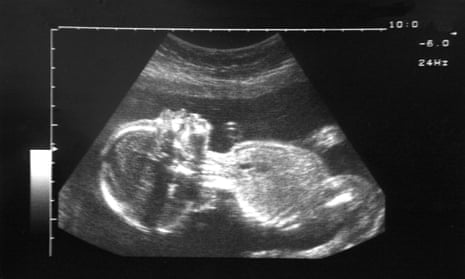Female embryos are more likely to die during pregnancy, scientists have claimed, overturning a long-held belief that males are more vulnerable in the first months of life.
Until now the “fragile male” hypothesis had been widely accepted and it was thought that female babies were more robust and less likely to suffer fatal health problems or genetic abnormalities in the womb.
The latest work suggests that the opposite is true, and if confirmed would undermine a large body of academic research and shed new light on the different challenges faced by males and females during the early phases of development.
Steven Orzack, a biologist who led the research at the Fresh Pond Research Institute in Cambridge, Massachusetts, said: “This is an excellent example of an idea in science that’s had wide circulation, but where the empirical basis was ambiguous. It gets in textbooks and then it’s viral. No one really sat down and said ‘let’s try and make sense of all this’.”
Under normal circumstances, the sex ratio of babies at birth is slightly skewed towards males, with around 103 to 105 male babies for every 100 females – without any artificial intervention.
Scientists had explained this by suggesting that more male embryos than females are conceived. It was also thought that more males died during development, based on the observation that a greater number of male babies are miscarried or stillborn during the final trimester of pregnancy.
A variety of reasons had been advanced as to why more males might be conceived, including one that said the Y chromosomes carrying sperm swim faster than “female” sperm.
The findings also raise new questions about observed demographic trends, such as the increase in females born following severe food shortages, or the peak in male births during wartime.
The results are based on an assessment of the mortality rates of hundreds of thousands of male and female embryos and foetuses throughout pregnancy – from one week after conception until birth.
The work, published in the journal Proceedings of the National Academy of Sciences, shows that although male babies are more likely to die in the last months of pregnancy, female babies have higher mortality overall.
The scientists analysed the fate of around 140,000 embryos, conceived using IVF or other assistive reproductive technologies, to look at mortality from the first few days after conception. The sexes of the embryos had been recorded when they were screened for genetic abnormalities, although in many instances, the sex was not revealed to the parents.
This data showed that male embryos were more likely to be abnormal and that many of these embryos die a week or two after conception, meaning that early on, pregnancies may become slightly biased towards females.
Data from around 800,000 amniocentesis tests, where fluid is taken from the womb, showed that between weeks 10 and 15, significantly more female embryos are miscarried. In the third trimester, female mortality is slightly lower than for males, but this does not compensate for the overall imbalance, the study found.
The findings suggest that there could be different windows of vulnerability for males and females during development, which in future could help scientists better understand some of the causes of miscarriage and stillbirth.
Female embryos could be at greater risk due to the way X chromosomes are inactivated in cells, scientists said. Females have two X chromosomes, but one is randomly switched off in each cell, leaving just one with active genes. However, sometimes this process becomes unbalanced and one X chromosome begins to dominate all the body’s cells. If there are genetic flaws on the dominant chromosome, it can lead to fatal health problems.
The findings are unlikely to improve the detection of intentional artificial sex selection, which has become widespread in some parts of the world, the authors said. Orzack added: “What’s happening with very skewed sex ratios in India and China has nothing to do with natural sex ratios. It’s definitely going on around the world, and it’s pretty bad.”
